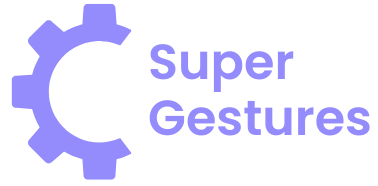Table of Contents
ToggleCoding tutorials have a unique charm that often leaves aspiring developers scratching their heads. With promises of transforming novices into coding wizards, these tutorials can sometimes feel like a rollercoaster ride—thrilling yet bewildering. From overly enthusiastic instructors who seem to speak a different language to the infamous “just copy this code” moments, the journey through coding tutorials is anything but straightforward.
Overview of Coding Tutorials Be Like
Coding tutorials often present a mixture of excitement and confusion for learners. Instructors showcase their enthusiasm through engaging explanations, yet moments of frustration can arise. New developers frequently encounter sections where they must copy code without fully grasping the underlying concepts.
Structured lessons appear in varying formats, from videos to written guides. Often, tutorials progress from introductory topics to more complex subjects, which can overwhelm beginners quickly. Visual aids and examples provide clarity, but they may not always align with every learner’s needs. Some tutorials assume a base knowledge that many new developers lack.
Over time, practitioners often realize that some tutorials prioritize speed over comprehension. This fast-paced approach might lead to gaps in knowledge, making subsequent learning more challenging. Real-world applications of coding frequently differ from what’s taught in tutorials, further complicating understanding.
Encouragement is essential for those navigating these challenges. Peer support through forums can help students fill knowledge gaps and gain insights from others’ experiences. Online communities often provide additional resources that can supplement formal tutorials. Accessing various learning platforms increases exposure to different teaching styles, contributing to a more rounded education.
Ultimately, the journey through coding tutorials shapes a developer’s skills and resilience. Engaging with the complexities of programming fosters a deeper understanding over time. Each tutorial contributes to building foundational knowledge necessary for success in the tech industry.
Common Characteristics
Coding tutorials often exhibit certain traits that create distinct learning experiences. These tutorials blend excitement and confusion, catering to a wide range of learners.
Simplified Explanations
Simplification often plays a crucial role in coding tutorials. Instructors break complex concepts into digestible pieces, making them more accessible for beginners. Clear definitions and straightforward language minimize confusion, fostering a better understanding. Additionally, visual aids like diagrams and flowcharts complement explanations, enhancing retention. Effective tutorials frequently emphasize the importance of basic terminology, ensuring that all learners stay on the same page. By prioritizing simplicity, tutorials help demystify programming, making it less intimidating for new coders.
Real-World Examples
Real-world examples significantly enhance the learning process in coding tutorials. Tutorials that integrate practical applications show how coding concepts apply to everyday situations. Consequently, learners grasp theoretical principles through concrete scenarios, making the material relatable. Successful tutorials often present familiar problems and guide users in solving them, illustrating the relevance of coding skills. Moreover, case studies or project-based lessons offer insights into industry practices, bridging the gap between theory and application. By showcasing real-world scenarios, tutorials prepare learners for challenges they might encounter in their coding journeys.
The Diverse Formats of Tutorials
Coding tutorials come in various formats, catering to different learning preferences. Each format offers unique advantages and challenges for aspiring developers.
Video Tutorials
Video tutorials provide visual demonstrations of coding concepts and techniques. Many learners find it easier to grasp complex ideas through engaging visuals. These tutorials often include walkthroughs of coding projects, making it simpler for students to follow along. Some instructors use annotations and highlights to point out essential details. However, a fast-paced delivery can overwhelm beginners and lead to confusion. Clear audio and structured content enhance the learning experience, yet learners who prefer self-paced studies may struggle with real-time instruction.
Written Guides
Written guides offer a structured approach to coding concepts in text format. They allow readers to digest information at their own pace. Well-organized guides often include step-by-step explanations and example code snippets. Learners benefit from the ability to pause, re-read, and reference material as needed. Some guides integrate visuals to supplement textual information, aiding comprehension. While textual formats engage readers deeply, lengthy text can discourage some who prefer interactive content. Balancing detailed explanations with succinctness is key to maintaining reader interest.
User Experience and Engagement
User experience plays a crucial role in the effectiveness of coding tutorials. Engaging tutorials enhance understanding and retention while fostering a supportive learning environment.
Interactive Elements
Interactive elements significantly improve learning outcomes. Quizzes, coding challenges, and live coding sessions help learners practice and apply concepts. Instant feedback from these activities allows students to identify mistakes and correct them promptly. Incorporating forums or discussion boards where users can ask questions creates a sense of community and encourages collaboration. Many tutorials feature built-in coding sandboxes, enabling learners to experiment without risk. Such features transform passive learning into an active experience, ensuring knowledge is not just absorbed but applied.
Community Involvement
Community involvement significantly enriches the coding classroom. Online forums and social media platforms connect learners with experienced developers who share insights and tips. Participants can join virtual study groups or attend coding meetups focused on specific languages or frameworks. Sharing projects within these communities fosters collaboration and encourages feedback, helping learners grow. Engaging with peers promotes motivation and accountability, making the learning journey less isolating. By contributing to community discussions, learners gain diverse perspectives that deepen their understanding and enhance their coding skills.
Challenges Faced by Learners
Many challenges arise for learners navigating coding tutorials. Understanding complex terminology and fitting it into context often leads to frustration.
Technical Jargon
Learners frequently encounter unfamiliar terms that obscure meaning. Terms like API, algorithm, and framework may confuse newcomers. Without adequate explanations, learners can feel lost and discouraged. Simplifying language and providing clear definitions enhances comprehension. Instructors should focus on offering context where jargon appears, making it easier for inexperienced programmers to grasp concepts. Resources that break down technical language into understandable segments support learners significantly.
Learning Curve
The learning curve associated with coding can be steep. Beginners often struggle as tutorials shift from basic concepts to advanced subjects rapidly. Some may not grasp foundational knowledge before moving on. Tailoring tutorials to accommodate different learning speeds helps address this issue. Supportive content that revisits previous topics ensures learners retain vital information. Balance between challenge and accessibility enhances the learning experience, supporting gradual skill development. Offering practice exercises can further solidify understanding while maintaining learner engagement.
Navigating coding tutorials can be a rollercoaster of emotions for learners. The blend of excitement and confusion often defines their experience. While some tutorials excel in delivering clear explanations and engaging formats, others may leave gaps in understanding.
Peer support and community engagement play a vital role in overcoming challenges. By connecting with others and sharing insights, learners can enhance their coding journey.
Ultimately, the right balance of clarity, engagement, and support can transform coding tutorials into powerful tools for skill development. With the right resources and mindset, aspiring developers can build a strong foundation for success in the tech industry.




